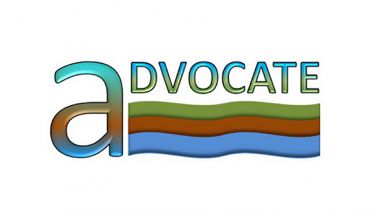Uwe Schneidewind obtained a BSc in Environmental and Resource Management from Brandenburg University of Technology (Germany) in 2006 and an MSc in Applied Environmental Geosciences from the University of Tübingen (Germany) in 2008. After his graduation, he started to work as a Field Hydrogeologist at the Helmholtz Centre for Environmental Research in Germany, where he was mostly planning and conducting field campaigns to acquire data relevant for hydrogeological and geophysical site characterization.
In 2010, he started his research career at the Free University of Brussels (VUB) in Belgium working mainly on a groundwater modelling and ecosystem restoration project. He joined the ADVOCATE Project in 2011.
For him, the huge prestige of Marie Curie across Europe and the fact that the fellowship provided him with a new challenge and the possibility to apply his acquired skills and to conduct his own research motivated his application. Uwe also comments us “the grant has given me the opportunity to establish a large network of international collaborations which may definitely enhance my professional aspirations".
Question. Why did you choose to start a PhD? What did you learn from it?
Answer. I started a PhD because I like doing research. After working for two years as a field hydrogeologist I was looking for a new challenge where I could apply my acquired skills and conduct my own research.
Q. Uwe your research topic is about the influence of subsurface heterogeneities on natural attenuation of organic contaminants. What exactly is Natural Attenuation? Can you provide us with an overview of it?
A. Natural attenuation is the reduction of contaminants by naturally occurring processes in-situ without human intervention. Contaminant degradation can be based on biological activity, chemical reactions, physical processes or a combination thereof. I have made a small overview of the most often occurring natural attenuation processes but in the end, it all depends on the physicochemical characteristics of the contaminant and the environmental conditions in the subsurface.
Q. More specifically, your research is focused on the study of groundwater-surface water interactions. Could you describe your research?
A. I am interested in flow, transport and attenuation processes at the groundwater-surface water interface. Specifically, I would like to better understand the interplay between the hydraulic properties of riverbeds and biodegradation processes. As the hyporheic zone (i.e. the groundwater-surface water interface or GSI) is defined both by aquifer and river characteristics, contaminant attenuation may take place at different rates and via different processes.
My research is divided into several work packages. At first, I had been looking at the biodegradation of Trichloroethylene (TCE) in aquifer and riverbed sediment samples from the Zenne River site (Belgium). By modelling degradation processes I acquired some insight into the reaction kinetics taking place in the different experiments.
In another phase of my project, I am interested in quantifying groundwater-surface water exchange fluxes and hydraulic conductivities under variable field conditions using temperature and hydraulic head measurements.
In a third phase, I am trying to design a model experiment based on data from a small reach of the River Tern. With a numerical model, I want to investigate the connections between hydraulic and biodegradation parameters and look at their sensitivities and uncertainties. From this experiment, I hope to deduce some general recommendations regarding their importance, which could be useful for model building and site characterization.
Q. To investigate these aspects you perform a lot of modelling using actual data from various field sites. Which are your last outcomes?
A. When modelling the biodegradation of TCE I used data from the Zenne River site, a site that is heavily contaminated with chlorinated ethenes and BTEX (Benzene, Toluene, Ethylbenzene, and Xylenes) due to long-term industrial activity. During several field campaigns, my colleagues had previously collected aquifer and riverbed samples and extracted pore water to set up various microcosm experiments, which I then modelled.
For determining exchange fluxes at the GSI, I am using temperature time series from the Slootbeek, a small tributary to the Aa River (Belgium). Over several months I measured riverbed temperatures at various depths and locations as well as hydraulic heads in piezometer nests. These temperature time series are now used to estimate fluxes across the GSI by means of a new 1D modelling method developed by us.
To look at the heterogeneity in hydraulic conductivity within a riverbed I am using hydraulic head measurements from the Slootbeek as well as grain size data, hydraulic head measurements and falling head test data from the River Tern (UK), which I am trying to analyze using geostatistical interpolation techniques.
The modelling study will be done using the software HYDRUS and the model will be based on data from the River Tern as well.
Q. What results do you expect?
A. I expect to better understand contaminant transport and attenuation processes at the GSI and uncertainties related to modelling and process characterization assuming heterogeneous subsurface conditions.
Q. Which would be the next step?
A. I am writing two articles and one report over the next months and I want to focus on my thesis that I would like to submit in the second semester of 2014.
Q. If you had to describe yourself in a phrase, what would it be?
A. I cannot really describe myself with one phrase but I like the following quote from Marie Curie as it also refers to myself: “Nothing in life is to be feared, it is only to be understood. Now is the time to understand more, so that we may fear less.”


